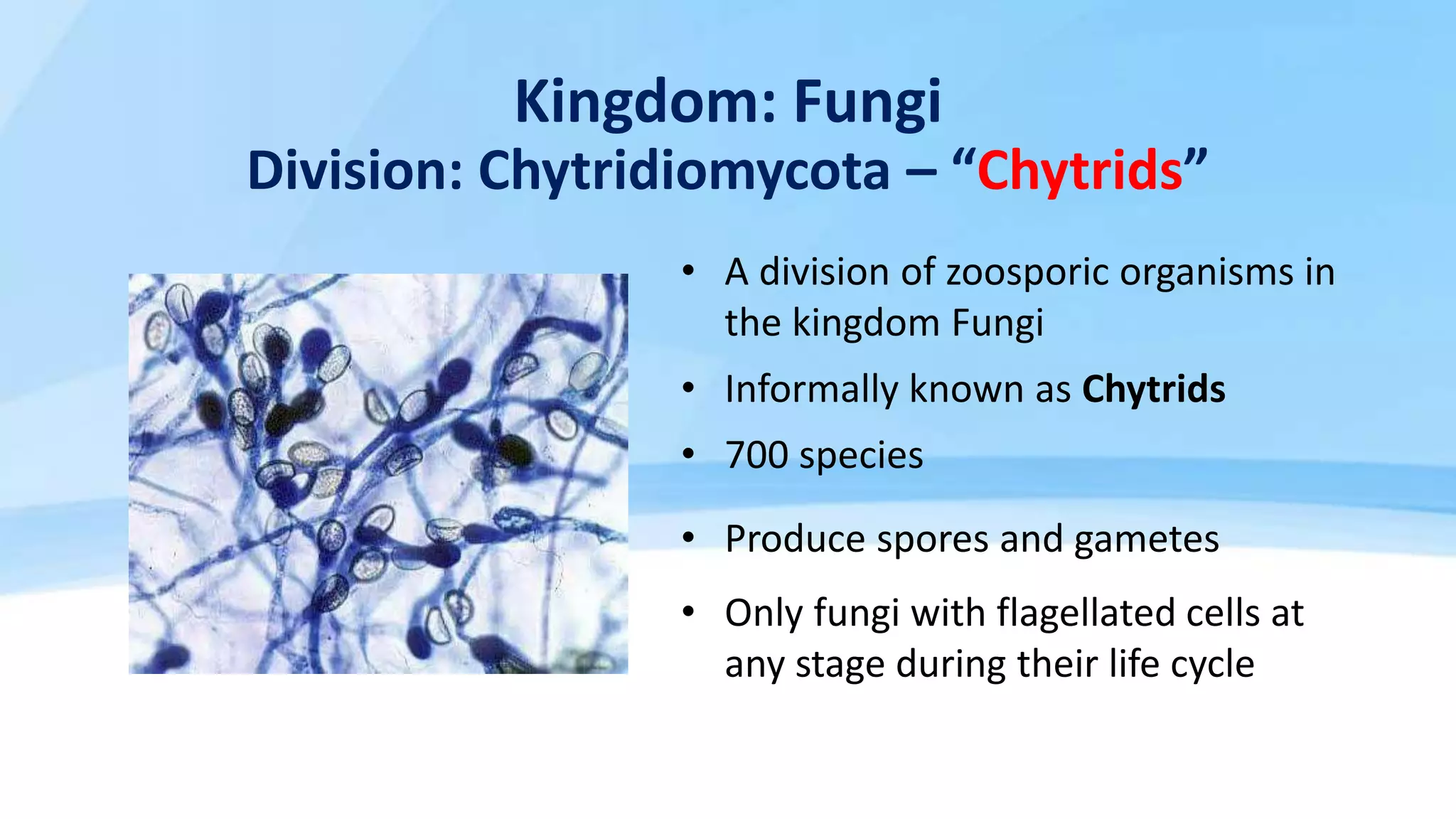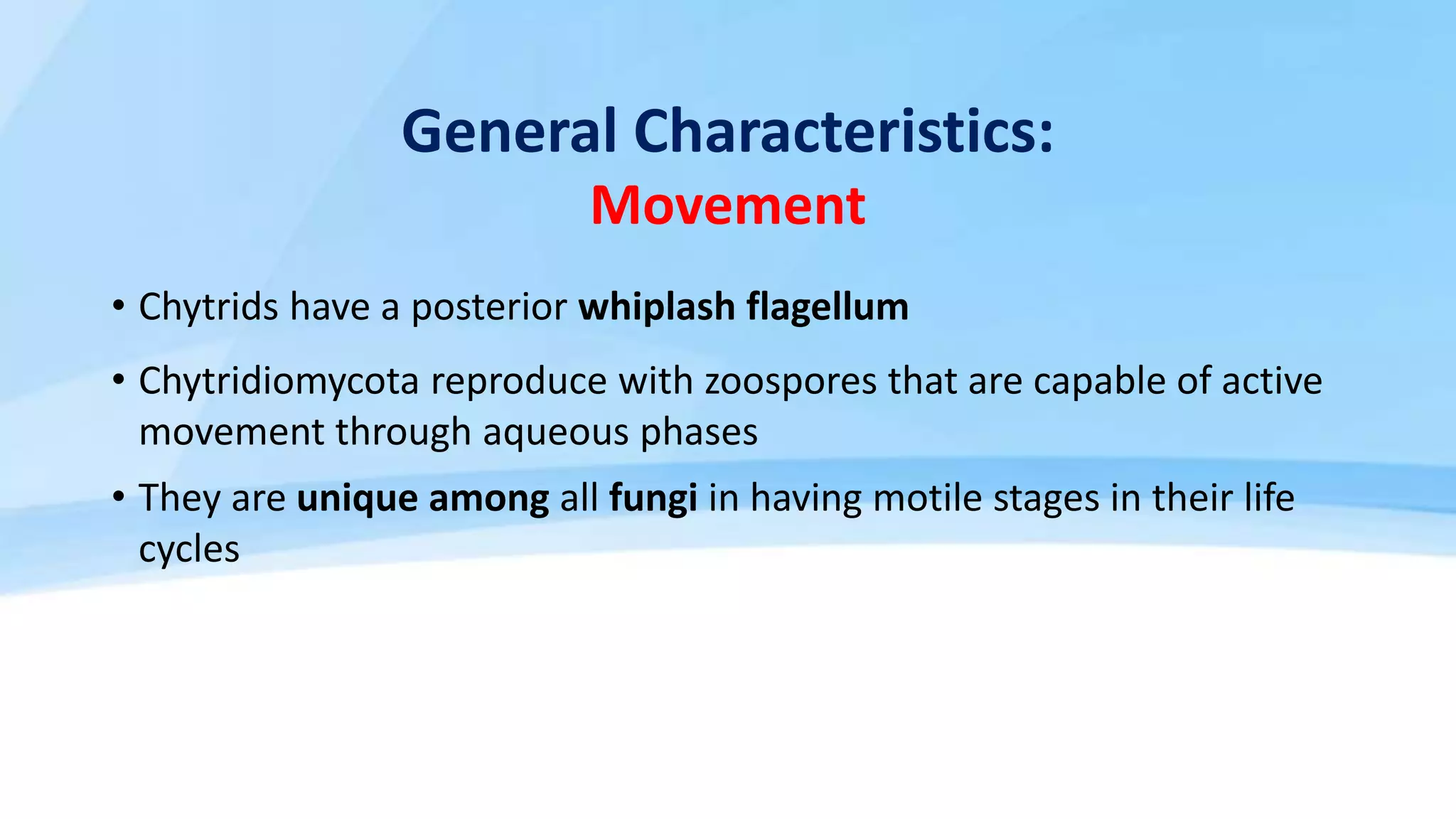This document provides an overview of the phyla Chytridiomycota and Zygomycota. It discusses their key characteristics including habitat, morphology, mode of nutrition, reproduction and life cycles. Chytridiomycota are unique among fungi in having flagellated cells. They are mostly parasites or saprobes in freshwater. Zygomycota form coenocytic hyphae and reproduce sexually via zygospores. Examples discussed are Rhizopus stolonifer bread mold. Both phyla play important ecological roles in decomposition but some species are pathogens of plants, animals or other fungi.






























